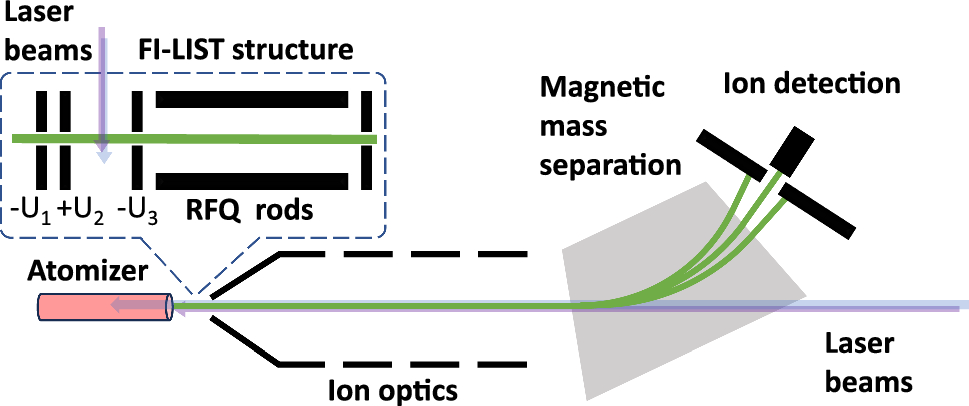EPJ D Highlight - Probing neptunium’s atomic structure with laser spectroscopy
- Details
- Published on 08 May 2024

A new technique developed by researchers in Germany can measure ionisation states of this element more precisely than before, with implications for its detection and remediation in radioactive waste.
The radioactive element neptunium is one of the principal components of nuclear waste. Mass spectrometry can be used to probe its complex atomic structure, which is of value both for its intrinsic interest and for determining the isotope composition of neptunium waste. Magdalena Kaja at Johannes Gutenberg University, Mainz, Germany and her co-workers have now demonstrated a novel method of laser spectroscopy that can analyse the ionisation potential of neptunium more precisely than earlier methods. This work is now published in the journal EPJ D.
Neptunium, an actinide metal, sits next to uranium in the Periodic Table with an atomic number of 93; almost self-evidently, its name derives from the planet beyond Uranus in the Solar System, Neptune. It has no fewer than 25 known isotopes. Most of these are very short-lived, but the most stable, neptunium-237 (237Np) has a half-life of over 2 million years. It is largely this isotope that makes it so dangerous as a nuclear contaminant.
The samples of neptunium isotopes that are available for this type of analysis are tiny: they generally comprise only a few atoms of an isotope. “Multistep resonance ionisation using a laser source has been proven to be the most useful technique for this, providing high sensitivity, specificity and precision”, explains Kaja. The state-of-the-art apparatus that she and her colleagues used incorporates a solid-state titanium: sapphire laser system, a refined laser ion source and a high transmission mass separator.
The researchers used this technique to measure the first ionisation energy of neptunium: that is, the energy needed to remove a first electron from its outermost electron shell, forming a positive ion. The value they determined, 6.265608(19) eV, agrees well with the values reported in the literature but is more than ten times as precise as any of them. “We now aim to extend our investigations to rare neptunium isotopes”, adds Kaja. The techniques can also be used to detect and analyse traces of neptunium in radioactive contaminants.
Kaja, M., Studer, D., Berg, F. et al. Resonant laser ionization of neptunium: investigation on excitation schemes and the first ionization potential. Eur. Phys. J. D 78, 50 (2024). https://doi.org/10.1140/epjd/s10053-024-00833-7





